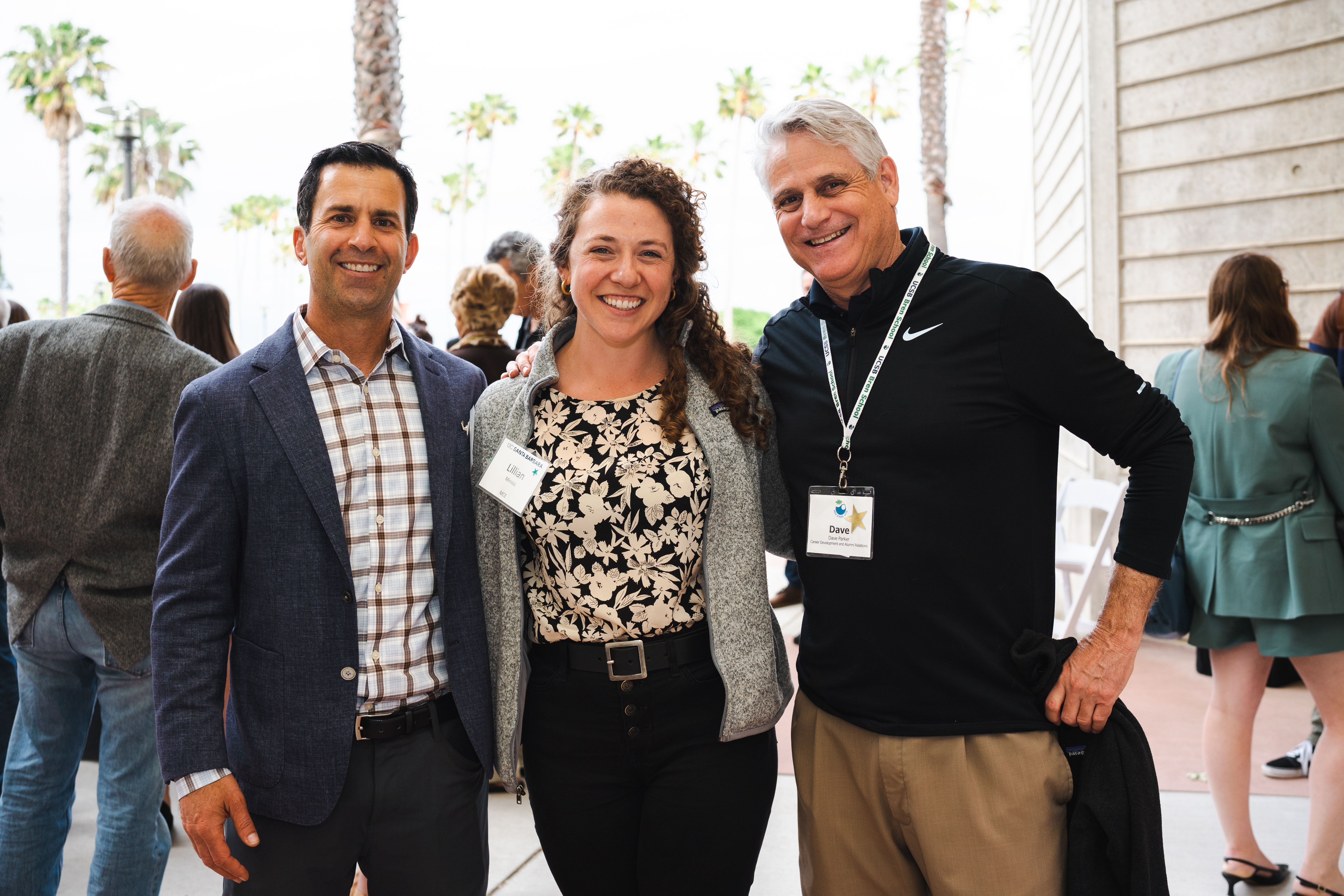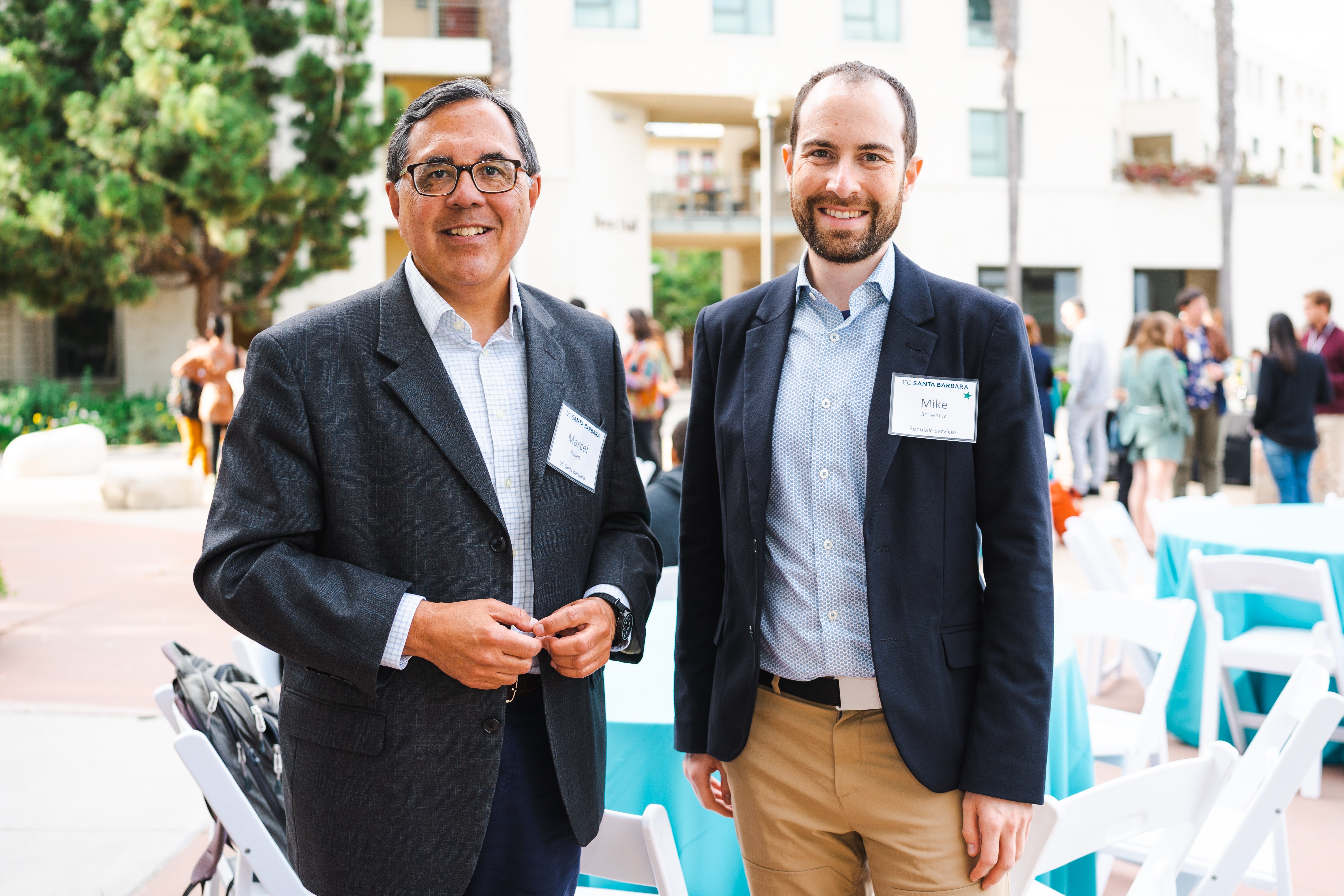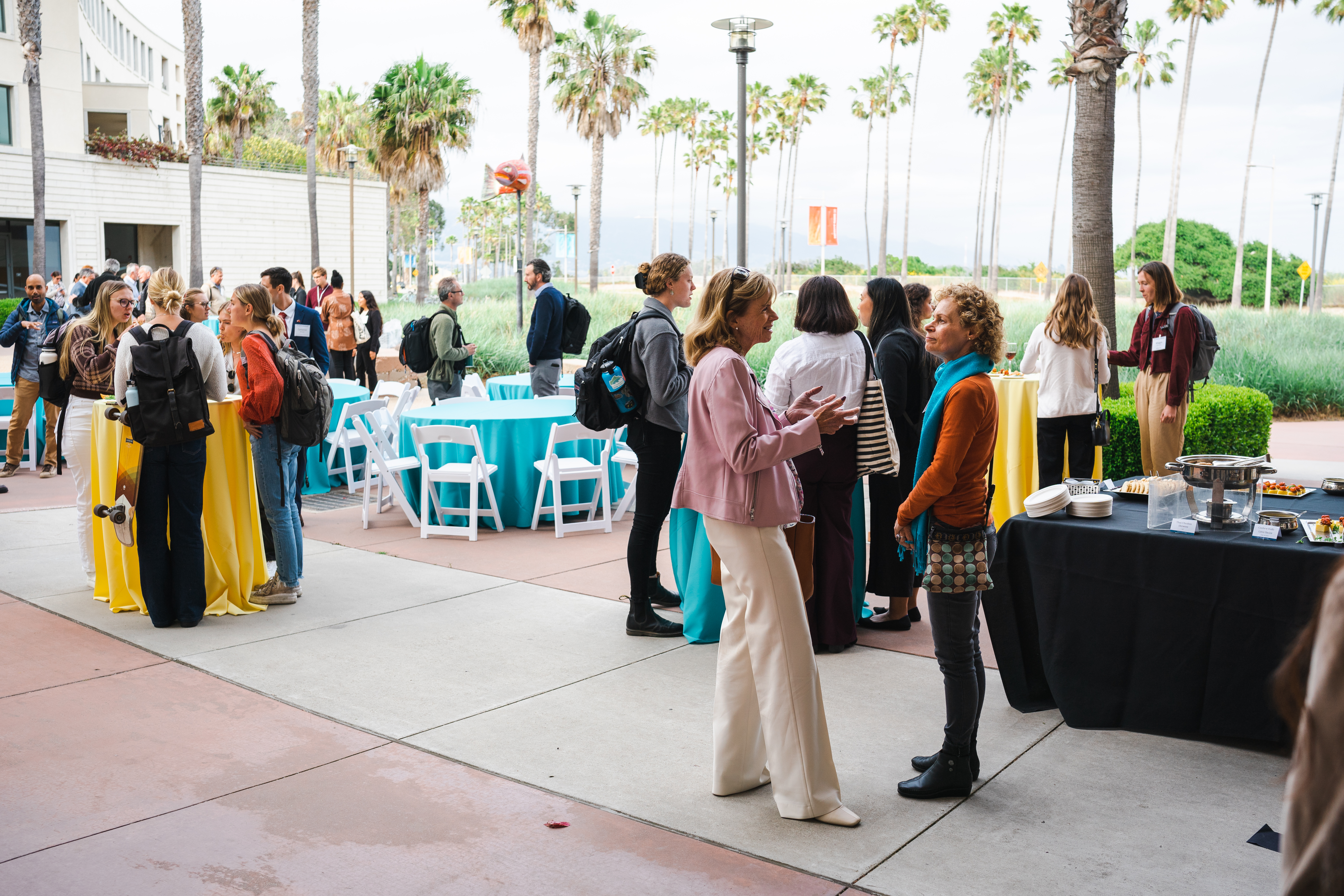Exploring the Future of Corporate Sustainability: Insights and Outcomes from the Bren School's Pioneering Summit
This year the Bren School of Environmental Science and Management hosted the first ever Corporate Sustainability Network Summit for our alumni and donors. This exclusive event brought leaders from a variety of sectors together to take a deep dive into current topics, problems, and solutions in the corporate sustainability field through a series of panel discussions. The summit highlighted cutting-edge research and brought together a powerful network of professionals and academics to inform decision-making and accelerate leadership in environmental problem-solving.

Net Zero Strategy – Hosted by Bank of America
Many companies have announced commitments to achieve net zero greenhouse gas emissions. Reducing emissions associated with operations, supply chains, and financing activities, are key to help ensure a just, stable, and sustainable transition to a low carbon future. This session offered the audience insight into emerging strategies in this fast-moving field.
Key takeaways included:
- Emphasis on absolute impact reductions rather than just eco-efficiency
- Best practices in Net zero include phasing out fossil fuels and avoiding the use of offsets
- The most efficient way to reduce fossil fuel/carbon emissions across the economy is likely via a carbon tax. This methodology can be more efficient as compared to cap and trade due to complications associated with setting the cap at the right level and making sure the market works appropriately
- Small and medium-sized companies have a significant role to play in achieving net zero, and consulting will play a crucial role in helping these companies that may lack expertise or in-house skill sets in these areas.
- The importance of setting ambitious targets to combat climate change, such as the 1.5-degree target, and the need for collective effort. Practitioners should also keep in mind that the IPCC does not say 1.5 is safe; they would probably prefer 1.2 degrees; it is estimated that we may hit 1.5 in 2027
- The public sector can help; subsidies and tax incentives can lay the groundwork for financing various environmental projects (e.g. EV charging or electrifying the grid). An excellent example of this would be the recently passed Inflation Reduction Act. Additionally, public-private partnerships are critical to educate and motivate private sector participants
- Much easier to work with incentives vs. disincentives: tax credits are the main incentive tool currently (including wind and solar); bolder action on disincentives would help meet the 1.5 degree threshold limit but politically it is a harder sell
- Carbon negative is going to be an increasing topic, especially as it relates to climate justice; a few large corporations are thinking about this

Per- and Polyfluoroalkyl Substances (PFAS) – Hosted by Brownstein Hyatt Farber Schreck
This session provided an overview of PFAS, a group of widely-used synthetic chemicals that do not degrade easily and have negative associated health effects. The discussion focused on the prevalence of these compounds as well as their potential sources, fate, and transport pathways. Content also covered the social and regulatory drivers, impacts, and challenges of PFAS management.
Key takeaways included:
- PFAS are chemicals used in various consumer products that have raised concerns due to the their persistence, health risks, and ecological toxicity; depending on the definition, there are 10,000+ chemicals are in this class
- PFAS came into use in the 1940’s and there has been exponential growth since the 1990’s; early examples include Teflon, scotch guard, clothing/fabric treatment, cosmetics, packaging (including food packaging), and firefighting foam (first responders are being exposed to very high levels of these compounds)
- We know that some PFAS are carcinogens and suspect that others also have similar deleterious health effects
- Long chain carbons (C8 or longer) have been known to be problematic for a while and were replaced with short chain carbons (C6 or shorter), but recent research is showing that they can be just as harmful
- Breakdown of these substances occurs over very long periods of time (decades in soil/sediment, three years in water, 1.5 years in air)
- PFAS leach into the environment and have been found in water, soil, and even the blood of humans (98% of people have it in their blood)
- Bioaccumulation is a risk, particularly because of the high level of potential contamination through a variety of supply chains/pathways
- PFAS are potential endocrine disruptors; pregnant women can transfer through the placenta and breastfeeding mothers can transfer these chemicals to their infants, which can cause developmental problems
- Point sources, fate, and transport of PFAS are difficult to track overall
- Challenges in investigating, evaluating, and remediating PFAS exist, and liability and responsibility issues need to be addressed
- Many companies do not know whether or not PFAS is in their supply chain; when companies phase out the use of PFAS is takes a lot of time and effort (one example was 7 years to phase out PFAS + and additional 2 years for those products to hit stores)
- NGOs play a vital role in holding brands and other companies accountable
- Regulatory framework acceleration: a bi-partisan coalition is pushing for regulation and safer drinking water standards; EPA drafted drinking water standards earlier this year; Maine, Colorado, and California have passed labeling requirements and prohibitions on certain consumer products containing PFAS
- Questions remain about regulating PFAS as a class vs. regulating them individually
- European countries are phasing out PFAS, while the U.S. takes a more deliberative approach by regulating chemicals on an individual basis, which can be incredibly time consuming
- Measuring compliance is going to be really challenging; health advisories and draft regulations are set at very low levels (below detection), and there is risk of cross-contamination. EPA’s recent sampling methodology remains a draft.
- Treatment and remediation: biodegradation is not an option with PFAS. Destruction is very difficult because they are stable chemicals. Collecting/isolating PFAS through a treatment system is often the only option we are left with but that is also challenging

The Energy Transition – Hosted by Latham & Watkins
Science, industry, and the global community are striving to meet carbon reduction goals to avoid the worst effects of climate change. Panelists in this session discussed the emerging technologies, policies, and social innovations that can be deployed to advance the transition to a low- or no-carbon economy.
Key takeaways included:
- Developing new affordable, reliable, and clean energy technology is a challenge – often people say we can only get two of the three; there are always trade-offs
- Offshore wind energy is being explored, but there are challenges with infrastructure upgrades (including ports and grids) and costs; the structures are enormous (a single blade can be of 300 ft. long); last year BOEM held its first lease auctions for the Pacific Ocean
- Onshore wind has likely peaked in California
- Solar is a challenge with too much on the grid during the day (the duck curve) and need for storage
- Hydrogen is seen as an important potential alternative energy source for storage, transport, and other applications, as part of a combination of different approaches to achieve the energy transition, including use in the industrial sector (plays a role in the steel sector)
- The energy sector is transitioning away from gasoline and considering hydrogen as an alternative, which allows them to use current infrastructure
- The demand side of the energy equation is being addressed through efficiency, conservation, new construction standards, and the development of new technologies, including new building materials
- Community Choice Aggregators serve local communities, especially underserved populations to advance equitable access to clean energy. Aggregators work hand in hand with their community members to identify, source, and deliver energy options that make sense for their constituents, there is no one size fits all solution
- Market based mechanisms to unlock innovation are important; voluntary policies work
- Public policy support will be critical; there are nascent “Buy Clean” initiatives at the federal level focused on concrete and steel for public works projects; the U.S. Department of Energy has invested a lot of R&D into wave power
- California has made a lot of commitments and set ambitious goals; the State is now in “the great implementation” stage; the State budget had a lot of money designated for energy/climate but it was clawed back due to the budget deficit
- There are a lot of competing interests among stakeholders and solutions are not always equitable; the same political forces that want to push climate initiatives are the same that don’t want to take away the process to protect environment and equity, which can take a lot of time

